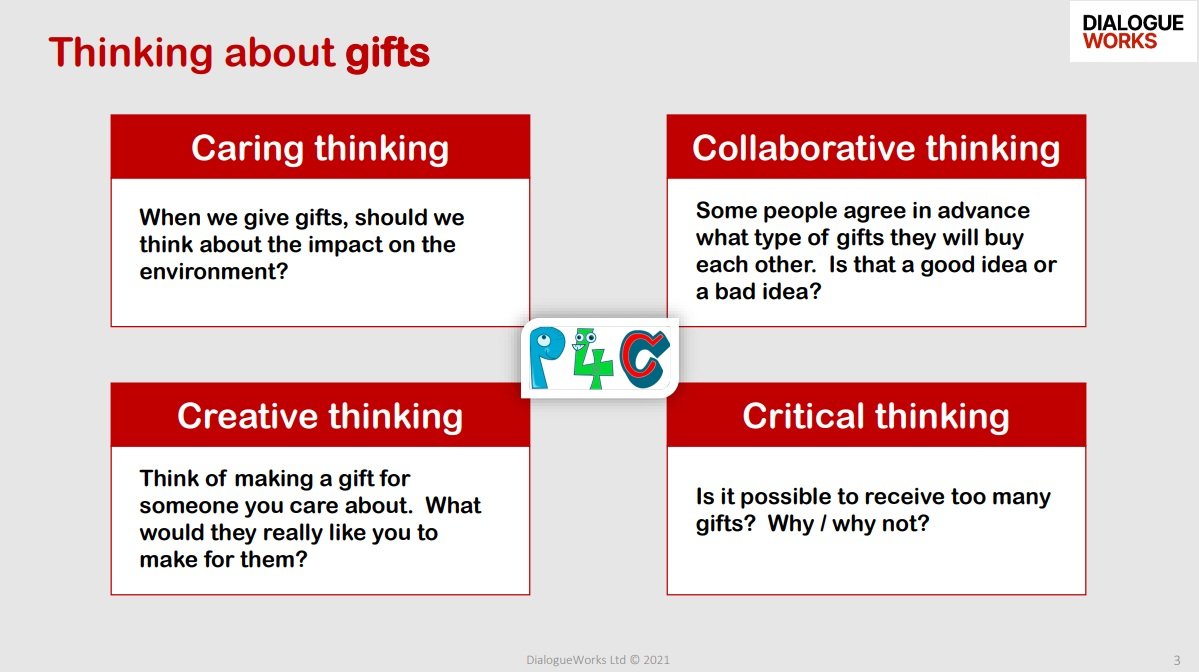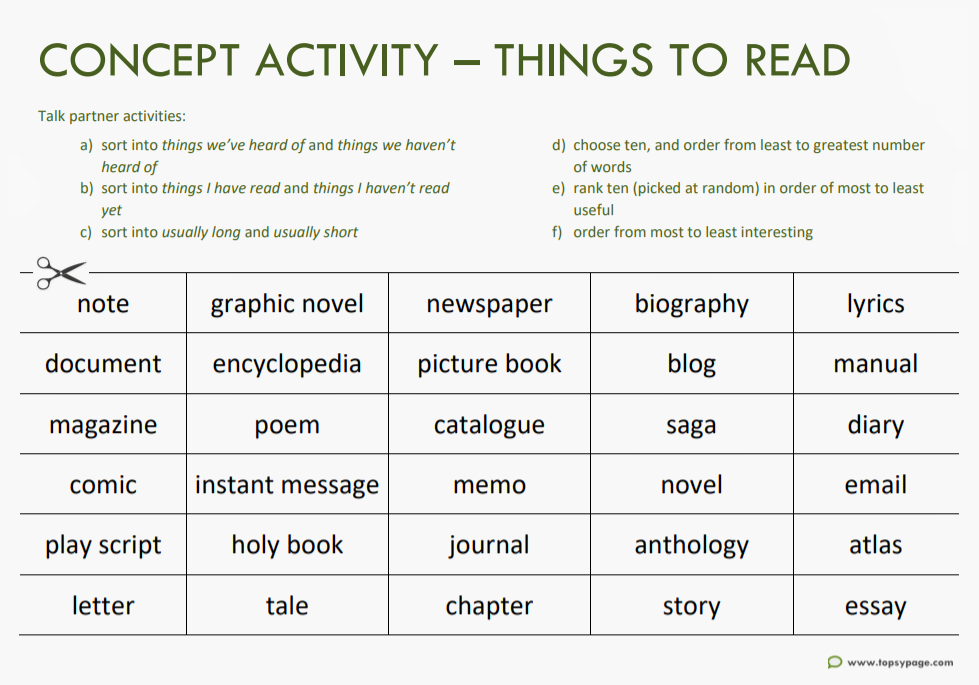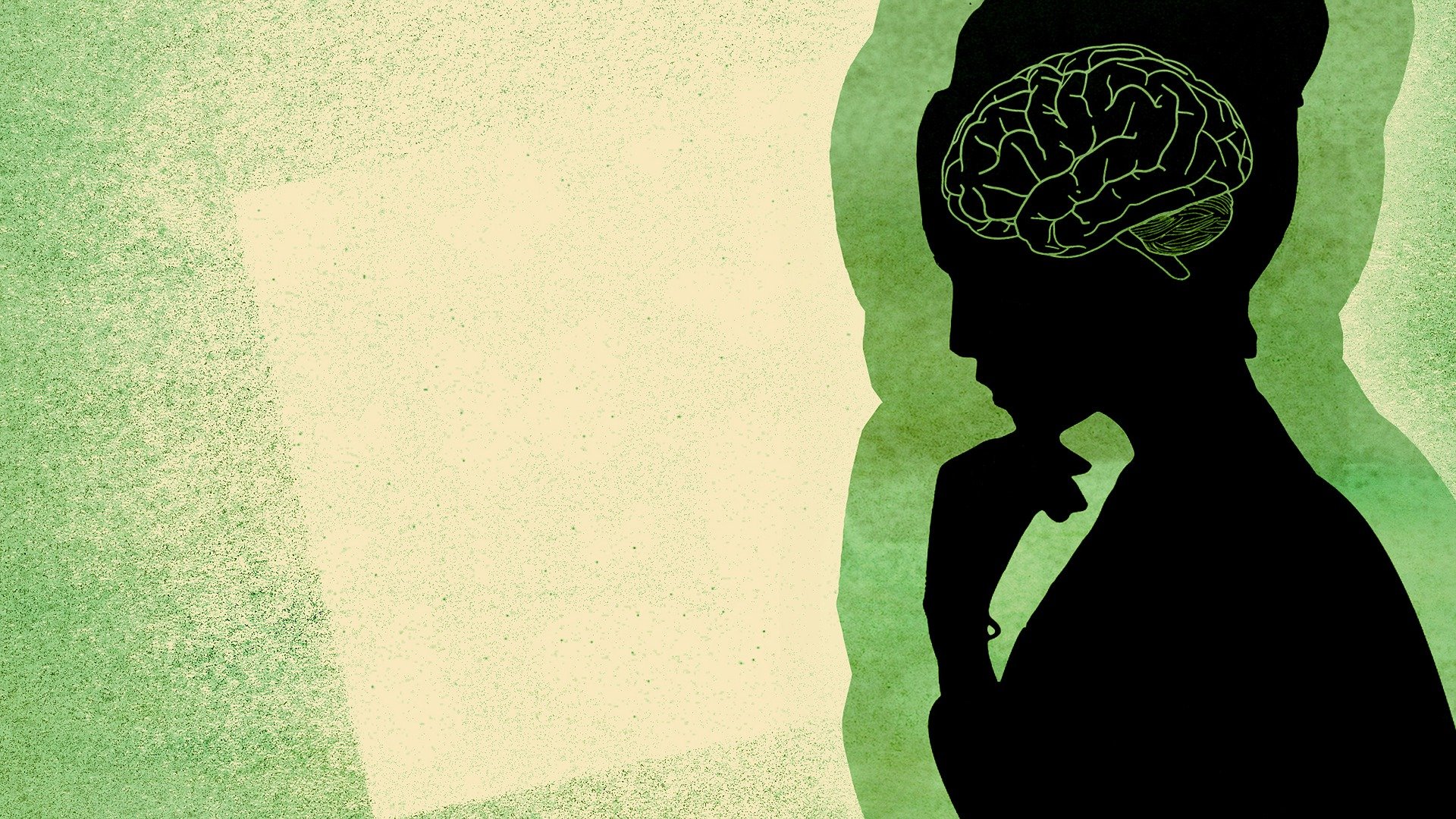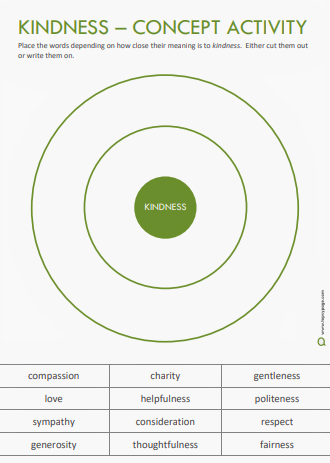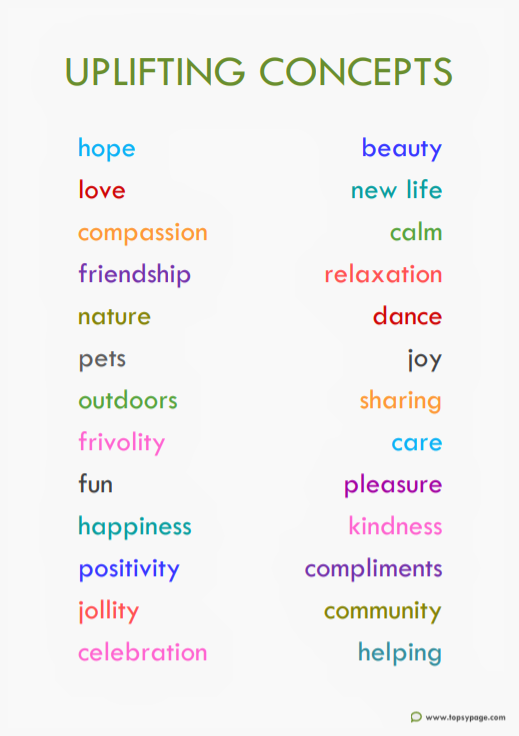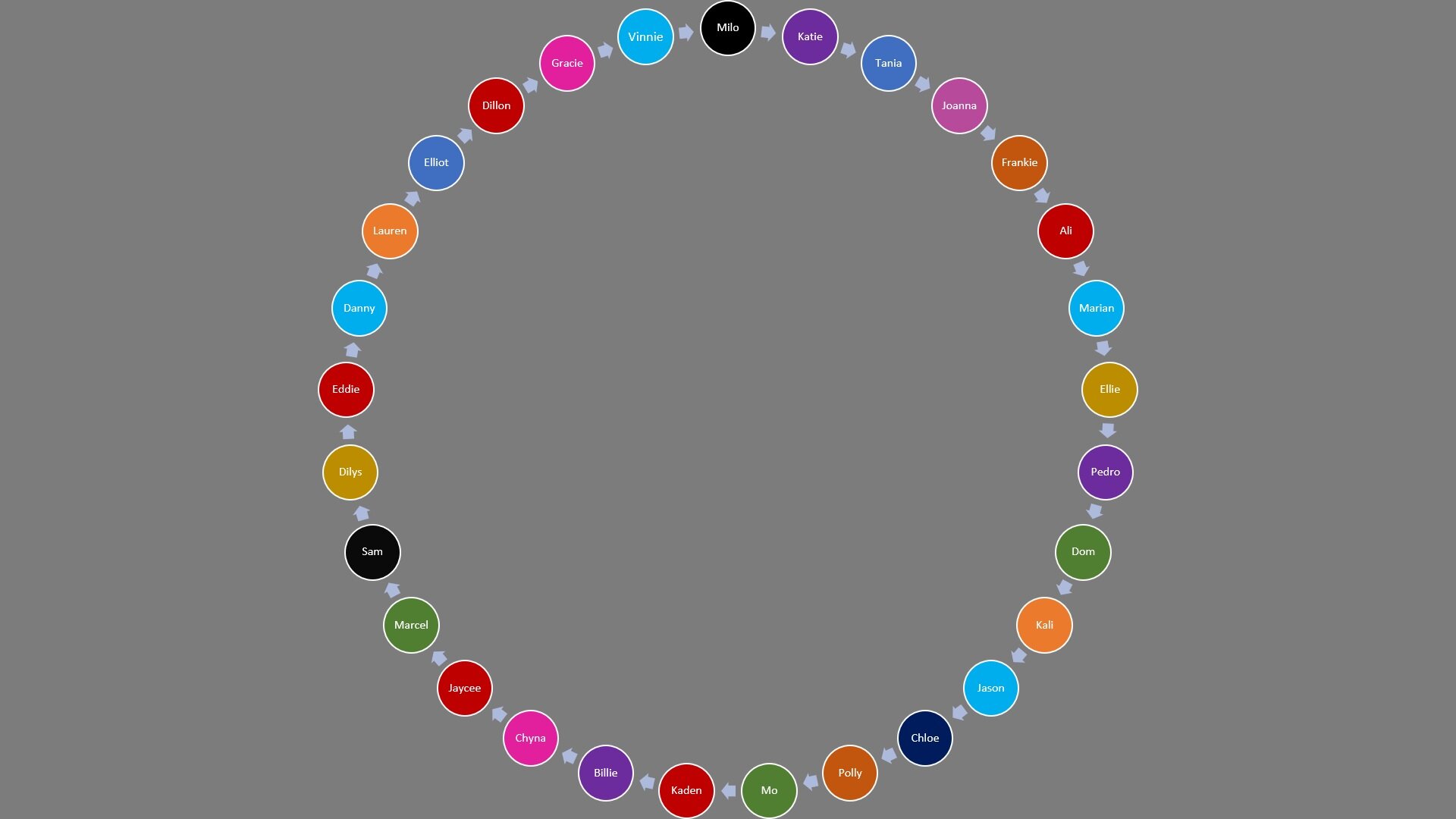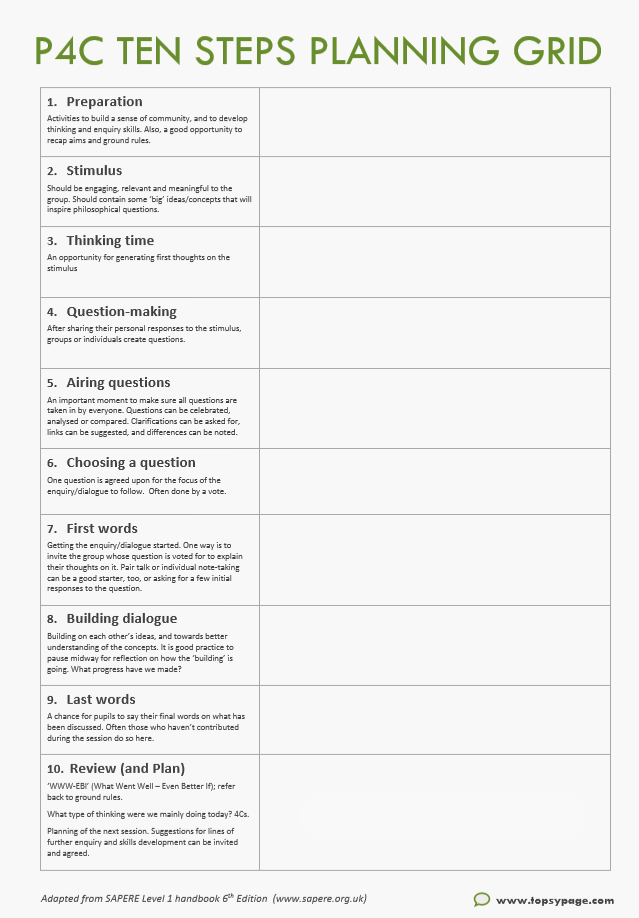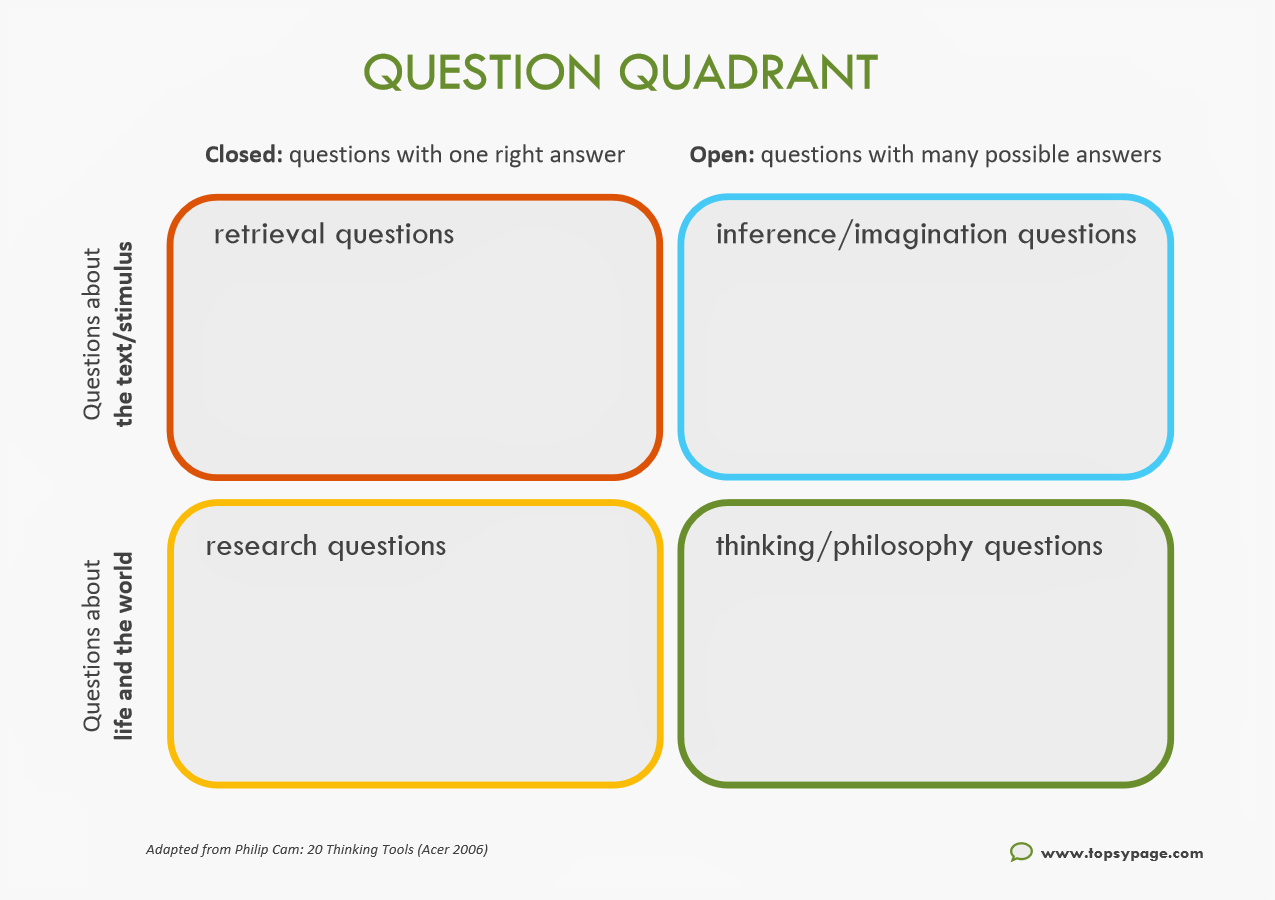I came across double bubble thinking maps through P4C. By providing a simple template for comparing two concepts, they’re a great way to help learners structure their thinking.
They can also be used across the curriculum, for example:
In Science, to compare substances or processes.
In History, to compare different periods or historical figures.
In Geography, to compare places or industries.


If they are routinely used in this way, students will be familiar with the technique and can get started quickly. They can be used with any age to compare and contrast.
By giving pupils the goal of producing something, double bubbles are an excellent way to keep pair talk on task. They’re also great for reluctant writers – there’s only a small amount of writing to do, but the template pushes you to fill in all the boxes.
I recommend keeping a supply of blank double bubbles in your classroom.
Are these examples of adventure, bravery, or both?
Talk prompts and sentence stems to help learners express different types of thinking
How to start a question, and think about whether or not it’s philosophical
A concept resource to explore vocabulary around different types of books and other written material
Get students to think and talk about new words in the context of what they are learning
More useful resources, including a Talk Tally to get pupils listening closely
A high-quality, easy-to-access resource that gets children talking
A list of positive ideas including compassion, hope, and celebration - for use in P4C or circle time
A resource to get pupils thinking and talking about whether living things have rights
A structure to allow all students to participate, even if sitting in a real circle isn’t an option right now.
This resource brings together phrases and tips to help parents and carers develop dialogue with their children at home.






